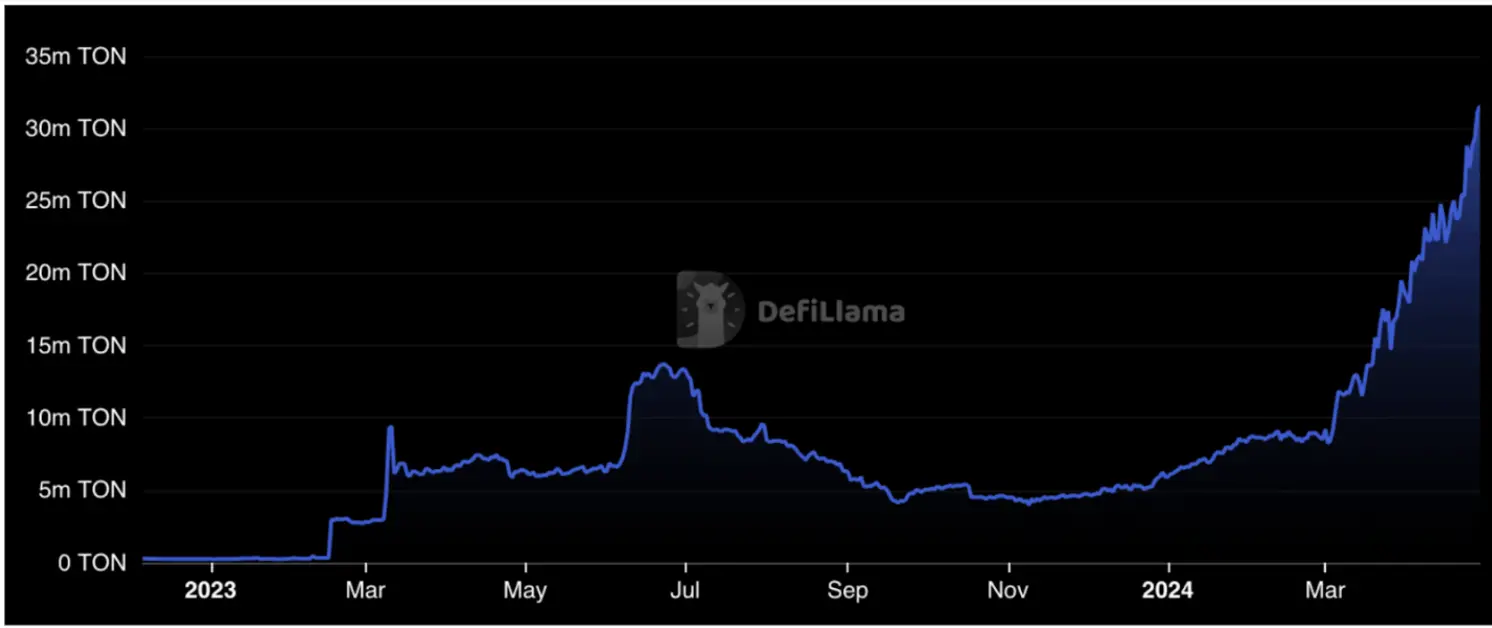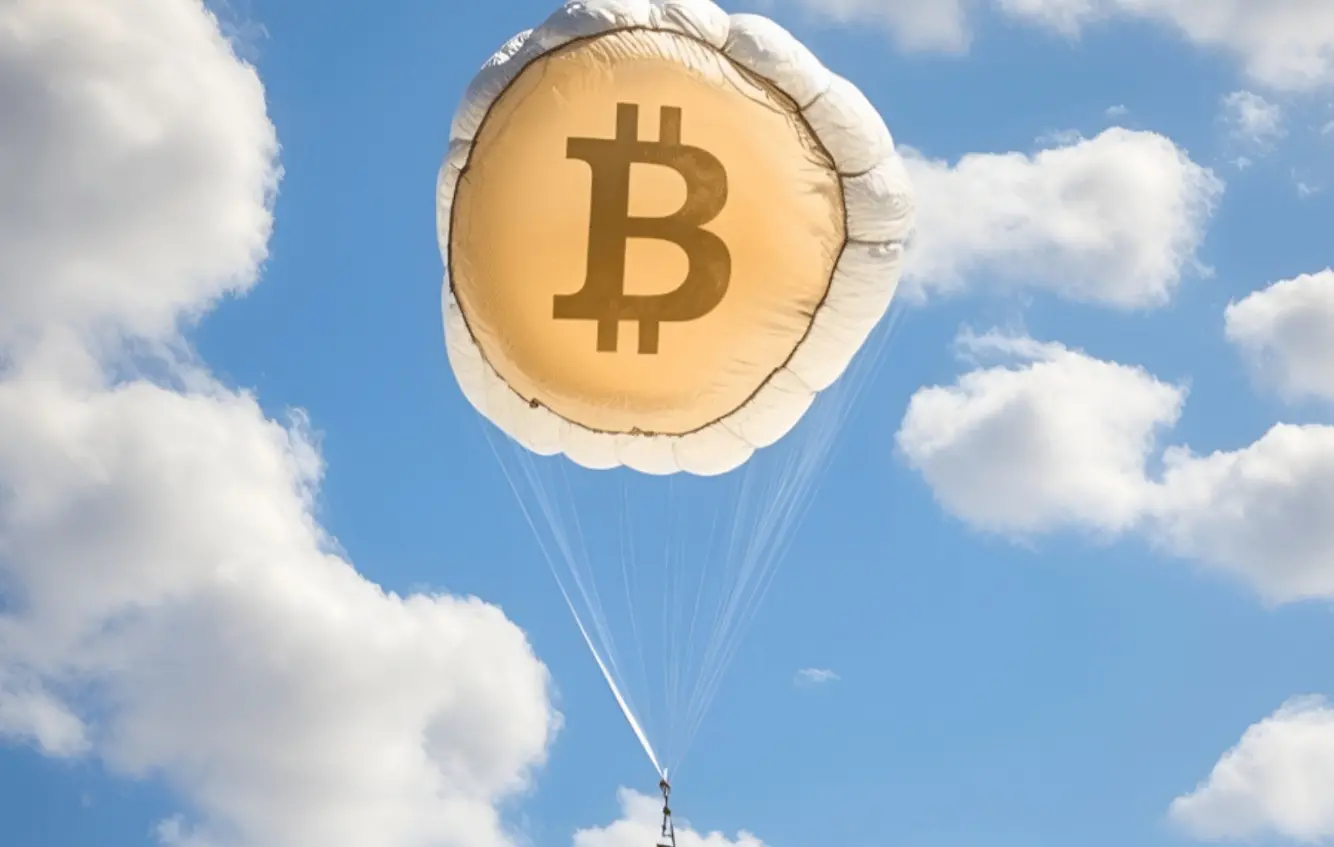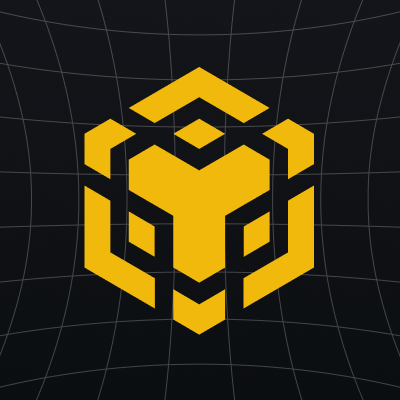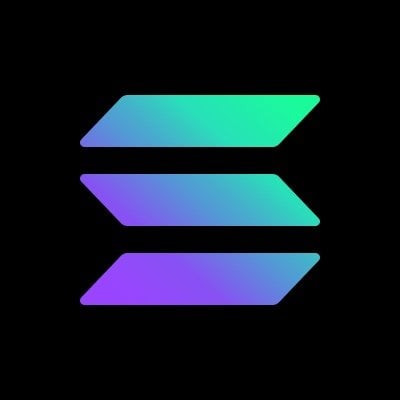Supply concentration, L1 value is underestimated, TON is expected to become the next big event in crypto
Original Title: “Why TON might be the next best thing since sliced bread”
Author: Potato's Thoughts
Translation: Deep Tide TechFlow
Compared to some veteran players, my time in DeFi/cryptocurrency is relatively short, probably close to two years. During this time, due to the volatility of DeFi and the broader cryptocurrency market, I feel like I’ve aged 50 years, but I believe I’ve seen it all. Chaos, gambling, leverage, the struggle and dissatisfaction with opponents during the rise, and the devastating declines, liquidations, cruel schadenfreude, and cold rug pulls/exploitation during the downturns. This is why I believe I am well-suited to publish this kind of traditional finance-style memo discussing a cryptocurrency that might pique the interest of some fund managers while also attracting retail investors who simply wish to make a mark. I hope to continue creating more articles like this and conduct some individual exploratory digital analyses, as long as
1) The crypto alternative market remains interesting, and more importantly:
2) If I notice disproportionate coverage of a specific project/game on Twitter, as has been the case with TON and its ecosystem.

Cryptocurrency: The Wild West of Financial Markets. The risks are too high to not participate.
This article will focus on TON—the Open Network, essentially a synthesis of various sources on this blockchain project, covering its history, current supply and demand dynamics, unique tokenomics, and including some of my own views. This memo was written on April 29, just a week before the headline news of Pantera purchasing locked TON tokens at an undisclosed price, marking their largest investment to date. While this development does signify that the investment is no longer "undervalued" to some extent, all analyses remain unchanged due to this development.
Content Summary
TON is a proof-of-stake blockchain indirectly supported by Telegram Inc through the TON Foundation. It achieves horizontal scaling through an architecture known as infinite dynamic sharding, and thus has achieved over 100k tps in a testing environment (compared to Solana's 60k). Considering the following points, we believe the native token on this chain is currently undervalued.
Concentrated supply and the scarcity value as a relatively less-owned L1
Clear market entry strategy and excellent distribution channels
Significant new growth potential given the current key performance indicators (KPIs)
Specific crypto-specific catalysts
Overview of TON
History of TON
TON was originally known as the Telegram Open Network, and its origins can be traced back to 2018 when Telegram's founding brothers, Pavel and Nikolai Durov, began exploring blockchain solutions for Telegram Messenger. That year, they raised a total of $1.7 billion in the initial coin offering (ICO) for TON tokens, followed by the release of the TON white paper and the launch of the first TON testnet in the spring of 2019. After facing a series of regulatory challenges, Telegram was ultimately sued by the SEC in October 2019 for conducting an unregistered securities offering, agreeing to refund its investors and paying a $18.5 million settlement in May 2020.
Although the Telegram team ostensibly ceased on-chain development, a new group of developers gathered under the name NewTON (later renamed the TON Foundation) and continued to develop seriously, focusing on adhering to the design principles set forth in the white paper, namely its "blockchain of blockchains" structure. Starting in 2020, all available TON coins could be mined using a proof-of-work (PoW) system called the "Giver" smart contract, with CPU mining continuing from 2020 to 2022. We note that while this distribution method aimed to promote decentralization and increase fairness, research clearly shows that a majority of the supply was mined by insiders or addresses related to the TON Foundation within two months (July to August 2020), with 248 closely related addresses mining 85% of the coins.

Token distribution by Giver smart contract type

Large miner groups categorized by mining duration
The TON Foundation has played a significant role in influencing the price of TON tokens to date, being crucial to the project's success. Since its establishment, its funding has primarily come from grants earned from the initial mining efforts, as well as recent locked over-the-counter (OTC) sales to professional investors. To strengthen its strategic direction, the TON Foundation announced a partnership with Telegram in September 2023, guided by a core team led by Anatoliy Makosov. This collaboration marks a key step in the continued development of TON and its market positioning within the broader crypto space, reinforcing the bullish case for supporting TON by providing a coherent, centralized driving force that effectively influences and elevates token prices.
Current Ecosystem of TON
The current TON ecosystem includes four main components: TON Blockchain, TON Payments, TON Proxy, and TON Storage (decentralized storage). The TON Blockchain is a general-purpose blockchain that contains a standard execution layer, allowing permissionless transactions. TON Payments is a low-fee micropayment platform that allows for instant, fast payments between users. It is currently accessible through the @wallet bot on Telegram, benefiting from in-app convenience. TON Storage allows for the storage and distribution of files on TON, similar to a decentralized Dropbox. Finally, TON Proxy ensures censorship resistance by allowing users to run .ton websites independent of fixed IPs/centralized domains. All four components have a rich roadmap ensuring future cross-compatibility and connectivity.
Thanks to the joint and coordinated efforts of the TON Foundation, Telegram, and its partners, on-chain ecosystem activity has exploded in recent weeks. Most notably, in April, we saw Tether announce direct integration within TON, allowing for local minting and redemption, which opens up possibilities for deeper decentralized exchange (DEX) liquidity and further capital inflow. The TON Foundation is also running various liquidity mining incentives, including approximately 11 million TON (about $5 million) reserved for DeFi liquidity providers. In addition to DeFi-specific incentives, the Foundation is also running a broader on-chain incentive program totaling over 30 million TON. As a result, the total value locked (TVL) in TON has explosively grown to 30 million by April 2024, a sixfold increase since the beginning of the year. We note that DeFi TVL is often quite opportunistic, and some capital may flow out once the rewards end in June 2024.
 Significant growth in DeFi TVL since the announcement of incentives
Significant growth in DeFi TVL since the announcement of incentives

Dedust and StonFi represent the largest share of TVL on TON (>90%)
Given that DeFi liquidity mining is ultimately a solved game and has seen multiple iterations in other alt-L1s, we believe the true value of these incentives lies in Telegram's ability to incentivize application users to interact with TON through other more orthogonal and niche ways. The current incentive programs reward projects that attract users through viral gaming mechanics like NotCoin (a simple yet addictive clicker app with over 3.5 million daily active users). These incentives are followed by rewards for completing in-app tasks (such as minting NFTs and DNS names), as well as liquidity mining for the largest decentralized exchange (DEX) on TON mentioned earlier. The ultimate goal here is to gradually introduce and familiarize Telegram's existing user base with the on-chain 'workflow' using TON's existing distribution channels.

The goal of the Open League Incentive program is to attract and retain a sticky on-chain TON user base
With the push of TON's incentive mechanisms, blockchain activity has seen significant growth across various metrics.
Transaction volume increased tenfold: Since March 2024, daily transactions have risen from 200,000 last year to between 2 million and 4 million daily.
Number of on-chain active wallets increased 3.6 times: From 600,000 addresses in January 2024 to 3.5 million by the end of April.
Daily active wallets (DAWs) have grown to six figures: DAWs are now around 160,000, a significant increase from 30,000 at the beginning of the year.
TON daily fees range between $50,000 and $250,000: Half of TON's fees are burned.

While these increased numbers may themselves be symptoms of non-organic and non-sticky on-chain participation, the rapid growth and activity of the ecosystem compared to historically smaller incentive programs (e.g., compared to Avax's $180 million program in January 2021) is significant, and whether this level of activity and total value locked (TVL) can be maintained post-incentive period should be monitored.

The thriving TON ecosystem
Overview of TON's Tokenomics
The fundamental argument of the article is that TON has healthy tokenomic characteristics. Despite a relatively high valuation, with a fully diluted value (FDV) of $24 billion and a circulating market cap of $16 billion, the TON Foundation and its affiliates tightly control a large supply, the network has a low inflation rate, and systematic OTC sales are used to allocate supply to investors, all of which are positive factors.
The current total supply is 5,107,431,318 (initially 5 billion), with an initial distribution ratio of 85% of tokens allocated to users and 5% to validators. The chain's inflation rate is 0.6% per year, with rewards paid to validators to maintain consensus. Looking deeper, we note that approximately 1.3 billion coins are locked in a smart contract (named the "Believers Fund"), locking up over 20% of the TON supply until October 12, 2025, after which they will unlock monthly over a three-year period. The total includes about 1 billion TON locked by users and 284 million TON for rewards.

Locker smart contract on TON
In addition to the Locker contract, the TON Foundation has also disabled approximately 1.1 billion TON held in large early miner wallets, which have had no outgoing transactions for 48 months. The result of these two measures is that approximately 47% (2.4 billion tokens) of the TON supply will disappear from circulation in the foreseeable future. Therefore, the effective circulating market cap is about $8.5 billion.
On the other hand, it is difficult to accurately assess the dollar value of the locked OTC coins sold, but according to public statements, at least $30 million worth of tokens have been sold to venture and professional investors:
MEXC Ventures made a "seven-figure" investment in TON in October 2023.
Animoca Brands became the largest validator on the TON network in November 2023.
Mirana Ventures supported TON tokens with $8 million in March 2024.
Although TON is still in its early stages of adoption, its narrative for value accumulation is relatively weak. However, with the continued growth of on-chain activity and the mechanism of burning 50% of TON fees, this situation should improve. A TON fee-burning mechanism similar to EIP-1559 has already been implemented.

Fee burning mechanism similar to EIP-1559 on TON
More importantly, Telegram is actively developing practical use cases for TON tokens as a "token aggregation" to enhance their value. For example, Telegram recently announced that it will exclusively use TON tokens for advertising payments. In this setup, advertisers use TON to fund their marketing campaigns, with revenue split between Telegram and content creators. Additionally, Telegram has begun accepting TON for payments for Telegram Premium, a service offered through Fragment Store, which currently has 5 million subscribers. These initiatives demonstrate the Telegram team's deliberate efforts to ensure that TON serves as a token with practical uses and clear value accumulation mechanisms.
Reasons to Invest in TON
Concentrated Supply and Undervalued L1
With a moderate annual inflation rate of 0.6% (lower than Bitcoin), relatively low liquidity in the medium term, given that about 50% of the supply is locked in the Believers Fund and inactive miner wallets, plus about 86% of mined coins are controlled or at least associated with the TON Foundation. Furthermore, most of the attention and locked OTC coin investments are completed by Asian participants, indicating that EU/US participants are at a disadvantage. The significant rise over the past two months has been primarily driven by Asia.

The significant rise over the past two months has been primarily driven by Asia
From a technical perspective, the current trading price of the coin is 2-3 times that of the beginning of this year and the low point of 2023. Compared to similar products like SOL, AVAX, and NEAR, the increase is relatively moderate, which makes the downside risk more apparent.
Clear Market Entry Strategy and Long-Term Vision
The grand vision of building a Web3 super app directly from mobile convenience has the potential to compete with WeChat. This marks a fundamental shift from the status quo of many crypto blockchains and DApps that serve speculators and tech elites, which essentially represent a smaller total addressable market (TAM) and should therefore receive lower valuations. Tether provides flexible support through its integration announcement, which is, of course, also supported by Telegram through its strong roadmap on the TON blockchain, TON Proxy, TON Payments, and TON Storage.
New Growth Opportunities
Given that there are currently about 3.5 million online active wallets, while Telegram has 800 million monthly active users, expected to reach 1.5 billion in the next five years, this represents a substantial and natural upper limit for the total addressable market (TAM). The TON Foundation strategically aims to attract 30% of Telegram's monthly active users in the next 3-5 years. If Telegram can convert at least 0.2% of its 200 million daily active users, its daily active user count will exceed Ethereum's current approximately 400,000. This is clearly a massive opportunity for user base expansion.
Specific Positive Catalysts in Cryptocurrency
In recent months, TON's daily trading volume has exceeded $170 million, and the listing on Binance's spot market could significantly reduce investment risks while providing some upside potential and more downside protection as liquidity increases. As Ethereum continues to advance its sharding roadmap, TON is expected to gain further attention due to its dynamic sharding architecture, although this comparison is somewhat tenuous.
Risks and Mitigation Measures
Questions about whether the project can maintain its current valuation, as it is an ambitious project that seems close to full valuation. At these levels, the chain and native gas tokens should serve as currencies rather than tools for technical speculation. Currency premiums are harder to achieve than technical premiums, which are inherently more transient.
The details of TON's OTC trading need further exploration, as funds that may become marginal price setters choose to purchase discounted OTC tokens, reducing buying pressure in the public market.
Developer participation is lower than other chains due to the programming language (FunC) being somewhat obscure. TON has 39 full-time developers and about 120 monthly active developers, while ETH has 2,400 full-time developers and 7,800 monthly active developers.
The supply unlock of the Believers Fund will begin in October 2025, although this will occur gradually over three years.
Regulatory risk remains a factor. However, we believe that much of the risk has been mitigated given previous experiences with the SEC. Telegram is clearly working to integrate the token into the platform, and it is reasonable to expect that Telegram has conducted thorough legal due diligence to ensure that its current and future operations with TON comply with necessary legal requirements.
Conclusion
We believe that much of TON's growth will not come from on-chain users captured by existing EVM and Rust-based blockchains. TON is paving a more orthodox future for itself, carving out its niche market for consumers who value ultra-fast, extremely convenient decentralized solutions that prioritize the free flow of capital and censorship resistance on new blockchains. In the long run, comparing TON to BNB with a market cap of $9 billion is a reasonable and realistic target, providing clear upside potential and room for outperformance over BTC.













